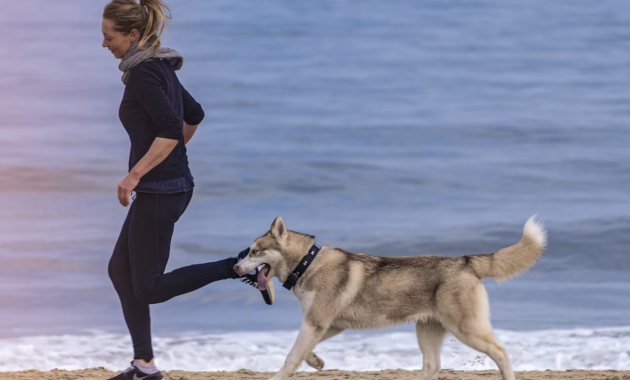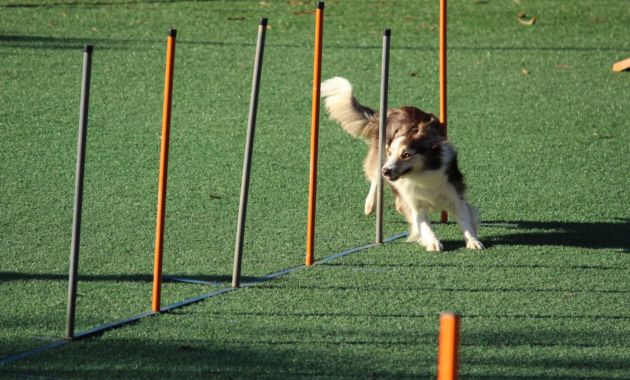Our pets are family, and just as we strive to ensure our loved ones are surrounded by a nurturing environment, the same is equally important for our four-legged companions.
Spending time in the great outdoors is not just a means of alleviating boredom for your dog, but also crucial for their physical and mental well-being. After all, a happy dog is a happy home.
So, how do we cultivate a space that caters to our dogs’ needs, keeps them physically fit and mentally stimulated, and ensures their safety?
From categorizing different breeds’ needs to the importance of training and socializing, this article will explore every avenue to enrich your dog’s outdoor experience.
Read on to unlock the secrets to creating the perfect outdoor environment for your beloved canine.
Understanding Your Dog’s Breed and Their Specific Needs
Every breed of dog has unique needs and tendencies. Knowing your dog’s breed traits will help you create an environment that aligns with their instincts and preferences.
Researching about your breed’s original purpose, for example, a retriever’s love for fetching or a terrier’s tenacity for digging, will help you design an outdoor space that channels these traits positively.
The Importance of Regular Exercise and the Great Outdoors
Regular physical activity keeps your dog healthy and happy. The outdoors offers endless possibilities for different forms of exercises, from a good old-fashioned walk in the park to agility drills.
By establishing a diverse exercise routine, you help your dog maintain muscle health and weight regulation, while also mentally engaging them.
Training Basics: Why They Matter in an Outdoor Environment
Training is not merely about obedience. It’s also about safety and enhancing your dog’s confidence in different outdoor situations.
By teaching commands like “stay,” “come,” and “leave it,” you can ensure your dog’s well-being when they are exploring outside.
Socializing: Building Confidence in Your Dog
Exposure to different environments, people, and other dogs helps your dog develop social skills and reduce unwarranted fear or aggression.
From dog parks to regular walks, outdoor experiences are excellent opportunities for your dog to learn about the world beyond their immediate family.
The Role of Toys and Games in Mental Stimulation
Toys and games are effective tools for keeping your dog mentally engaged. They promote problem-solving skills and ward off boredom, which can lead to destructive behavior.
Outdoor toys like flying discs, balls, and interactive games like tug-of-war are great for this purpose.
Safety Protocols for Outdoor Play and Exploration
Your dog’s safety is paramount when planning outdoor activities. Ensure your yard is secure, with no places for your dog to escape.
Regularly inspect the area for potential hazards like toxic plants, harmful substances, or sharp objects. Also, ensure they are protected from parasites that are common in outdoor environments.
Tailoring Your Backyard: Creating a Dog-Friendly Space
A dog-friendly backyard goes beyond a secure fence. To address potential risks, one may wonder, “is incense bad for dogs?” while considering relaxing outdoor elements.
While incense might not be as common in a backyard, the smoke can indeed be harmful to dogs if they’re exposed to it. So it’s best to avoid it outdoors, just like you would indoors.
In terms of designing the space, consider aspects like shade for hot days, access to clean water, and different textures for exploration. If your dog loves to dig, designate an area where this is allowed.
Installing different zones, such as playing, digging, and chilling spots, can provide a stimulating outdoor space for your dog.
Final Takeaways
Creating an enriching outdoor environment for your dog entails understanding their needs, encouraging physical activity, prioritizing training and socialization, and ensuring a safe and stimulating space.
Let the love you have for your furry friend guide you in creating an outdoor paradise that will enrich their lives and enhance your bond with them.
FQs
Q: What kind of outdoor activities are suitable for my dog?
The suitability of outdoor activities greatly depends on your dog’s breed, age, and health. Common activities include walking, running, playing fetch, and agility training. Always monitor your dog to ensure they’re enjoying the activity and not overexerting themselves.
Q: How much exercise does my dog need?
Every dog is unique, so their exercise needs will vary. As a general rule, most dogs should have at least one hour of physical activity every day, but dogs with high energy levels may require more. Speak with your vet to understand what’s optimal for your specific breed and age of dog.
Q: How can I make my backyard dog-friendly?
Create a safe, enclosed space with plenty of visual interest. Use non-toxic plants, secure any pools or ponds, and provide shaded areas. Including different zones for play, relaxation, and perhaps a digging pit, can encourage various forms of enrichment.
Q: What basic commands should my dog know for outdoor safety?
Key commands for outdoor safety include “Sit,” “Stay,” “Come,” and “Leave it.” These directives can prevent your dog from running into dangerous situations or eating harmful substances.
Q: What are some ways to mentally stimulate my dog outdoors?
Use games that promote problem-solving, like hide and seek or fetch. Interactive toys can keep them engaged for prolonged periods, and exploring new environments also provides mental stimulation.
Q: How do I protect my dog from potential outdoor hazards?
Regularly inspect your backyard for dangerous items, hazardous substances, or toxic plants. Ensure your dog is protected against parasites. Train your dog with basic commands and always supervise their outdoor play to prevent any potential risks.






















